A biweekly series, The Ursula K. Le Guin Reread explores anew the transformative writing, exciting worlds, and radical stories that changed countless lives. This week we’ll be covering The Tombs of Atuan, first published by Atheneum in 1970. My edition is Atheneum 2012, and this installment of the reread covers the entire novel.
As a youth, I was obsessed with the darkness—one of those many, little obsessions, the specificity of which died away at puberty only to be recovered in the haze of adulthood nostalgia. In elementary school I drew maps of tunnels that took up entire pages, and penciled in tiny stick figures who climbed about and dwelled there. I read a book about bats (Kenneth Oppel’s Silverwing, a topic for another essay, no doubt) and spent a week sleeping in my closet, trying to become a bat. A little later I saw Pitch Black and tried to recreate the film in a dozen play sessions with friends. In middle school, I read R.A. Salvatore’s Drizzt novels and fell in love with Faerûn’s Underdark. And on a trip to Ape Cave (a little ways from Mount St. Helens), I got to experience the utter and complete blackness of the world below ground for the first time after I convinced my family to take the lanterns and go ahead around a bend, to let me find my way back to them in total darkness. It was terrifying and wonderful at the same time; it was everything.
Like A Wizard of Earthsea before it, Le Guin’s The Tombs of Atuan was meant for kids. Now we call it a YA novel, though recent marketing schemes for the Earthsea series seem to be aiming more for the 8-11 year old crowd (I cannot stand my books’ covers!). Of course, the novels weren’t written solely for children but for anyone, even if they happen to be quite marketable as children’s fiction. But Le Guin certainly did right by her publishers’ intended audience when she chose the setting, an underground tomb and labyrinth complex both frightening and exhilarating, an extension of Earthsea all the more exciting because it is so unspeakably mundane and exotic at once: the darkness. And, what’s more, it’s about those who dwell in the darkness, the Nameless Ones, embodiments of the great Powers we imagine and fear are there. True, we’ve no proof, but we have heard stories and would rather not chance it—so we run, we shut the door tight, we turn the lights on, we pull the covers over our heads. Kids are primed to experience the Tombs.
The dark is a powerful fictive tool, taking on a life of its own, and Le Guin makes such beautiful art of it in Tombs. Since this is Le Guin—and it’s me reading Le Guin—you bet your ass she took it beyond incredible sentences, artful descriptions, and expert use of setting and tone, by now all obvious staples of her work as a writer. Out of the darkness of the Place of the Tombs of Atuan, from Arha’s struggles with Ged and with herself in the dark of the Labyrinth, comes a powerful critique of ideology, of what it means to believe—and more daringly, what it means to be oneself in a world where one is made to believe. These are important aspects of children’s literature generally, in which protagonists often struggle to understand who they are, what the world is, and how they fit in and jibe with the world as whoever they are.
It’s at this point in drafting that I would usually begin to write the “great reveal,” the thesis statement that binds together what follows: “But it is also…” I would then attempt to describe to you how Tombs of Atuan is so much more than this, how it goes above and beyond the familiar conventions of children’s fiction. How it is true Literature, it is Art, a heartbreaking work of staggering blahblahblah. But why? Tombs need not be more. We need not call it by another name to see it as offering important insights into the world, as bringing forward the deep truths about power and mystery and religion and belief that it does. It is enough to say that Tombs does what children’s literature—and much other writing and meaning-making—does, and it does it very damn well.
***
Le Guin wrote Tombs as a sequel to A Wizard of Earthsea after a road trip in summer 1969 to the part of Oregon that is unlike the Pacific Northwest shown in the movies and on TV. There, in the desert mountains of the southeast, Le Guin discovered what the Kargish lands, the realm from whence came the warriors who attacked Ged’s village in Wizard, must look like. No surprise there, for Le Guin’s language is at its finest, its most artful, and its most loving in Tombs when her sentences luxuriate in the plainclothes description of thistle and juniper and frozen reeds by the banks of a desert river in midwinter. Such sentences make me yearn again for the PNW, make me want to be the kind of person who knows plants of the forest by name and can return home days, months later even, and write so vividly that I am transported back just for a moment.
Moved by the mountains of Harney County, after writing The Left Hand of Darkness, Le Guin returned to the final lines of Wizard, to the prophetic note that Ged would one day recover the Ring of Erreth-Akbe from the Tombs of Atuan. She sat at the typewriter. She wrote a new novel.
Buy the Book
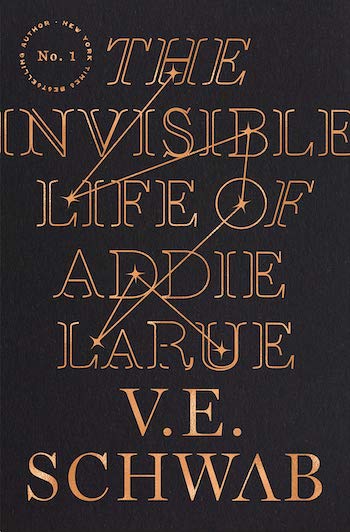

The Invisible Life of Addie LaRue
Now, I like Wizard. It’s a fine novel and I can clearly bust out a few hundred words about it, probably more if I tried real hard. But I don’t love it. I do love Tombs of Atuan. And not just for the darkness stuff, which does brings me back to my childhood love of darkness and is no doubt something I should mention to my therapist—no, I love Tombs for the final two chapters, and I love it for what it says about power and ideology, how it reminds me of my own coming into knowledge that we need not believe what we are told. Sometimes it’s prudent, yes. “Fire burns!”—don’t believe it at your own risk. Other times, belief serves greater Powers, possibly even ones that those responsible for teaching us may not have known were being served. Belief births followers, but it also creates slaves (a highly racialized term Le Guin uses without racial cognizance, and which I invoke here both as reference to Le Guin’s usage and as literal exemplifier of how belief in racial hierarchies can lead to a system like racialized slavery). Tombs is also, for anyone still dithering about Left Hand and its “failure” as a feminist novel (time to move on, folks), a pretty damn good feminist novel. Let’s start there.
Le Guin let down a lot of folks when she couldn’t imagine a girl-wizard becoming a powerful wizardess in her first Earthsea novel. She then made the rather startling decision to write a sequel in which Ged appears only halfway through and in which he is not, in fact, the protagonist. True, Tombs’s Arha is not a wizard and even lives in a land where wizards are barely more than a legend, but Arha is a priestess, the High Priestess of the Tombs, born into her office as First Priestess, raised believing in her continued rebirth since time began, and brought into service of the Nameless Ones who dwell below the Tombs of Atuan, who in her and the Kargs’ beliefs have dwelt so since the beginning of time. Arha, in short, is powerful beyond measure. At least in word.
In deed, Arha is powerless, her office filled merely for the ritual of it. She has no real dominion over those who in theory serve her, neither over Kossil of the Godking nor over Thar of the Twin Gods. Indeed, her very name is no name at all, for it was ritualistically taken, rendering her nameless as the Nameless Ones. Le Guin calls this loss of personal identity, this being folded into the belief that the young girl is the First Priestess eternally reborn, “eaten” and so Arha is the Eaten One. The name reminds me so much of Lily Myers’s poem “Shrinking Women” and it gets at the heart of Le Guin’s critique, namely that, in a patriarchal world, women with power hold power only insofar as they are made (by holders of actual power) to believe they are powerful.
Le Guin shows that power is a sadistic, gendered ideology. Even the high Priestess of the Godking, Kossil, is implicated here. She holds power over Arha not just because she is older, and thus Arha’s taught “remembering” of the First Priestess role is within her command, but because she attends to the rites and religious cult of one whose power is supreme in Kargad, the Godking, a human king whose ancestors (not unlike the pharaohs and caesars) declared themselves immortal gods. It is as Manan, Arha’s servant who believes more fervently in the Nameless Ones than she does, says: in a society where belief in the Nameless Ones is waning and the cult of the Godking holds dominion, the High Priestess of the Godking could kill Arha in front of all the priestess and go unpunished. But the High Priestess, a woman driven mad with the “power” she has attained through her position, lives far away in a desert, performs her duties before a silent statue, and has no interaction with the world beyond the Place. Her power is as much a fantasy as Arha’s. It is the Godking, he whom she and all Karg worship, who holds power.
Yet—and here is where Le Guin deepens her proto-feminist critical intuition—even the power of the Godking is illusory, for when Arha takes the name Tenar and escapes the Tombs with Ged, when she passes through what to her seems a gigantic city and thus represents the might of the Kargish Empire which could, in her mind, crush Ged’s lands to the west, Ged gently quiets her naiveté and lets her know that Kargad is but a small land, its cities small, its Godking barely more than a minor warlord. Indeed, the Godkings are but petty men, so afraid of others having power that they both banished magic—understood in Earthsea as the ability to have power over other life through the knowing of true-names—and labeled writing a dark art. Separated from the rest of Earthsea by geological happenstance, the Godkings ruled the four islands of Kargad like British middle-schoolers stranded on an uninhabited island.
Power, to the Kargs, is akin to godliness. It is something to be sought, not shared. Such was Ged’s belief when he freed the Shadow, and it was a foolishness unlearned through deadly struggle. In Tombs, we watch Arha’s indoctrination into the cult of power-as-godliness. Why are Nameless Ones to be worshipped? They are old, they are powerful. And we watch her struggle with the idea of unfaith, Penthe’s and Kossil’s, in different measures. We watch her becomes cleansed of the indoctrination, so much so that she disavows the very existences of the Nameless Ones at the novel’s climax, telling Ged that they are plainly dead, only to learn that simply unsaying what has been said does not make truth. Rather, the Nameless Ones do exist, but they are not to be worshipped as gods simply because they are powerful. No, they are an evil, and evil, however powerful, is still evil; worshipping it is folly at best and evil itself at worst.
Le Guin, not yet a feminist by her own words (see paragraph eleven) at this point in time, used a children’s fantasy novel to lay out a deeply feminist understanding of power. First, by implicating the relationship between gender and power through Arha’s struggles with Kossil and with her forced role as First Priestess. Second, by implicating further the disempowerment of Kossil. Third, by implicating the Godking’s own falsified establishment of power over not only Kossil (and Arha), but over an entire nation. The fragility of the Godkings’ masculinity abided neither wizards nor words, for both have power, both can see through the illusion of ideology.
To take Le Guin’s genius—please permit me this one, unironic usage—further, Tombs suggests another type of power, that of the bond. After all, in the story of Sparrowhawk’s life, the Tomb of Atuan is the setting of his great adventure to reunite the broken halves of the lost Ring of Erreth-Akbe and the novel itself ends with the ring being held aloft by Tenar as Lookfar glides into the harbors of Havnor to triumphant cheers. It is a Tolkienian scene, perhaps the only one in all of the Earthsea novels, but the ring is important. (Sadly, Le Guin does not explain how this vision of power-sharing fits with the very idea of kings and princes, still very much active in her pseudo-medieval fantasy world, but genius isn’t all-encompassing.) Whether or not Erreth-Akbe’s ring is a ring of power in the sense of Tolkien’s rings, it symbolizes (and supposedly aids) the ability of leaders to bind together the people of Earthsea not under the autocratic submission of tyrants and princes, but in peace. The ring of Erreth-Akbe is sought once lost because the broken rune, the Bond-Rune, was lost. Tenar and Ged reunite the runes through an act of solidarity and trust. Ged survives the Labyrinth because he trusts Tenar; she escapes the Tombs and her ideological enthrallment because she trusts Ged.
Trust, and solidarity in spite of differences. Feminism today, thanks in large part to the interventions of radical thinkers of color and of queer folks, thrives on these conceptions of how we make a better world. The cult of power-as-godliness dies a hard death, its leaders fickle illusions and its followers unfairly duped. Power-as-solidarity breathes freely of the fresh desert air, basks in the image of a great and powerful wizard sleeping in the dirt, a thistle growing by his hand. Tenar refuses the life of both priestess and princess and chooses that of the goatherd’s wife, as we see in Tehanu. In this world of great wizards, monstrous unnamed powers of the dark, of empires and godkings, Le Guin shows us a way to the joy Tenar felt in the mountains outside of the Place. Solidarity. Trust. Friendship.
We may learn the rabbit’s name, but to call him and kill him is an evil. Better that we treat power, knowledge, as a gift and hold it in trust. Better that we temper the temptation to rule over, and that we learn to live with, side by side, as neighbors and goatherd’s wives.
Thanks for joining me on this journey through Le Guin’s feminist-anarchist children’s fantasy novel. Due to scheduling issues caused by me simultaneously working from home and homeschooling an eight-year-old, I’ll return next Wednesday (rather than in two weeks) with a look at the third Earthsea novel and the final novel of the first portion of The Ursula K. Le Guin Reread. After The Farthest Shore, we’ll take a short break and when we return start in on a chronological reread of Le Guin’s novels, stories, essays—even some poetry! Be seeing you.
Sean Guynes is a critic, writer, and editor currently working on a book about how the Korean War changed American science fiction, and co-writing a book on whiteness for the MIT Press Essential Knowledge series. For politics, publishing, and SFF content, follow him on Twitter @saguynes.










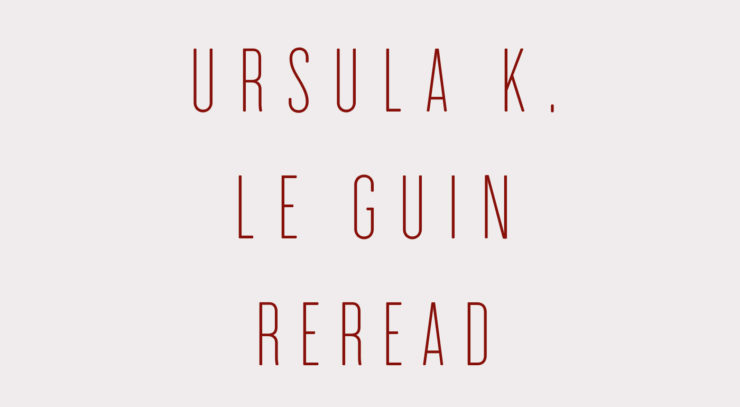
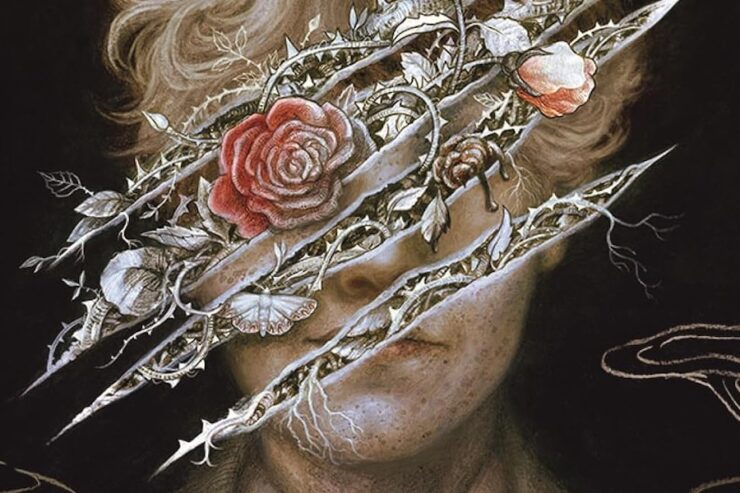
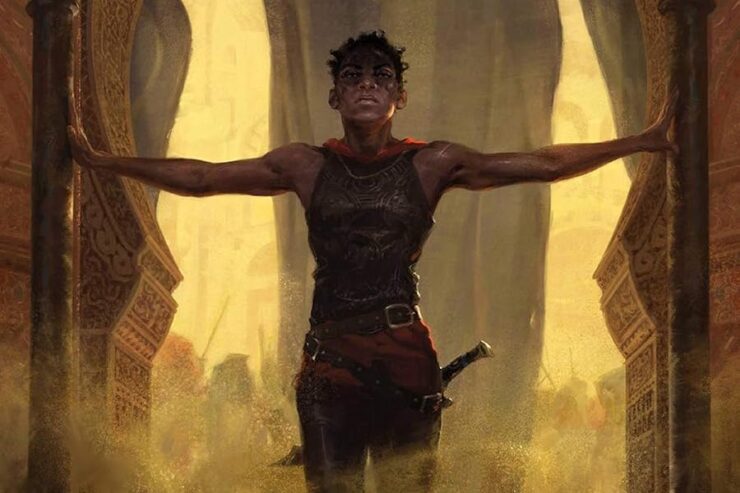
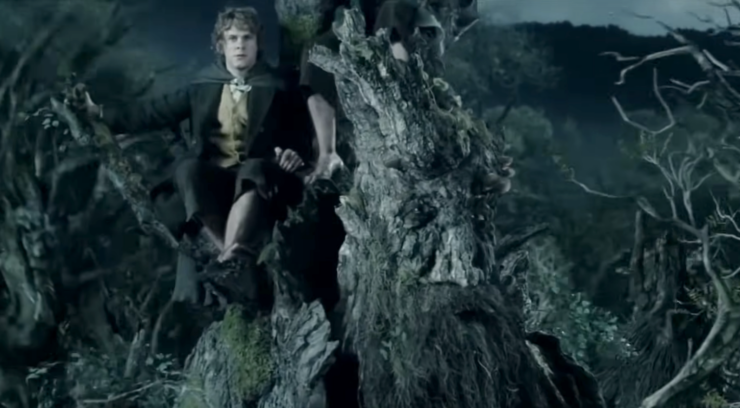
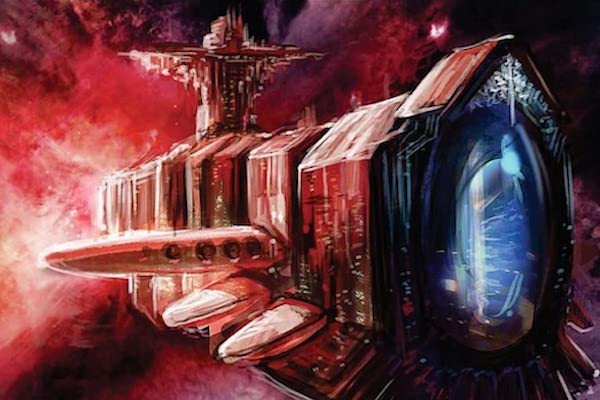
I encountered this novel as a child of 10 in 1974, and did not know that it was a sequel: luckily, since that meant Ged was as much a mystery to me as he was to Tenar.
Imagine my delight to come across A Wizard of Earthsea the following year – but The Tombs of Atuan remains my favorite work, ever, by Le Guin.
Thank you for a fascinating and insightful article.
I love this book because it was different the second time I read it. I read it the first time as a boy and thought it a rather dull sequel to WIZARD. It didn’t have the travel and more obvious magic. I read it again as an adult and was engaged. The adult me had dealt with enough bureaucrasy and lies and idiological nonsense to know that adventures happen as much within the mind as they do across a landscape.
Sadly, Le Guin does not explain how this vision of power-sharing fits with the very idea of kings and princes…
Le Guin speaks well of natural aristocracy elsewhere – King Lebbanen of Havnor is a good example – but I don’t think that she’s enamoured with the idea of hereditary privilege. Rather, she depicts some individuals as having the attributes that we recognize as virtues in an ideal ruler (clemency, compassion, responsibility), and some of these people, by chance, are born into positions of power – but others aren’t. In The Dispossessed, one of the reasons Shevek got along with the old physicist Atro, an aristocrat, was that Atro had an aristocrat’s contempt for money and demagogic power, which seemed quite natural to an Annaresti like Shevek. This idea of thinking like an aristocrat, for one’s self, rather than trimming one’s opinions to gain the approval of others, shows up elsewhere in her work.
On another note, the figures on the wall of it was the Painted Room, I think – the bird-headed figures cloaked in feathers, who represented the dead, subsisting on a diet of clay and dust – seems to have been lifted from Sumerian mythology – something very like this is found in the story of Enkidu, I believe. This shows up much later in The Other Wind, I believe, when Tenar has a nightmare of Ged as one of these bird-headed people. Personal survival after death just wasn’t worth it.
Not the first time I’ve said this, but it’s funny how you can have an entirely different perspective on a book when you re-read it. ‘The Tombs of Atuan’ was my least favourite book in the trilogy as a kid. Re-reading it now, it’s easily my favourite. Ged’s story has a mythic resonance that’s very appealing to a teenager. Perhaps a male teenager in particular? ‘The Tombs of Atuan’ on the other hand, has a contemporary resonance. You could draw a corollary with Arha, and – say – some young girl growing up in the Third Reich. It’s interesting about Le Guin’s road trip as the book also has a very distinct sense of place (another big plus).
A quibble: Karhide is the country of Estraven in The Left Hand of Darkness, not the “Kargish lands.”
This is probably my favorite Earthsea book, too. I loved it because it takes the Kargs, who mostly appeared as savage invaders in the previous book, and shows them as a people — some are cruel, their religion is harsh, but there’s also kind Manan, and gentle, thoughtful Penthe, and the other girls and young women of the religious community. And Tenar, who opens the story as a little girl running for the joy of running, before she is taken from her family and given a new identity at once and over time, then begins to question her world. Setting-wise, I especially liked the description of the jeweled cave newly illuminated.
Darkness and caves were never my top obsession, though I though about them a lot more after I discovered the glorious puzzle book Monster Mazes which consist of intricate mazes through a cave system teeming with monsters and treasures, and later atter I fell wildly in love with Gollum.
The power issues seem like a side one to me. If Tenar/Arha and the other priestesses had real power, but everything else was the same, she’d still be right to leave it and seek something better. Arha’s world was one that took and gave nothing back. It was about isolation. The most nurturing relationship she has is with a slave (subordinate person with no power), and he dies trying to stop her escape from this restricted world. Kossil interacts the most most freely with others but only in terms of subjugating or harming them. Her land could be the greatest empire her world had ever seen and she could have power to execute the king if he ignored the rituals, and it wouldn’t make what’s done to her any better.
@ 5. tehanuw
Ha, totally my bad. Thanks for catching. It’s fixed.
You didn’t mention Manan, who was so well-written as not quite a person in any of the power hierarchies, whose life teaches Arha she can have power over another (if they’re insignificant enough), and whose death teaches her loss.
Manan and Penthe reached her on an intimate emotional scale where the cold withdrawn nature of Thar and Kossil made less of an impression.
As an adult reader, I’m aware of the significance of Thar and Kossil as you describe them here, through the power-structures. I suspect this didn’t affect me at the time because we see relatively little of it in terms a child would understand.
Hey! No disrespecting Thar here! Thar and Arha have the best female mentor-student relationship I’ve ever seen. She helps Arha understand what Kossil is really like. “If Thar had been stern, she had never been cruel. It was pride she had taught to Arha, not fear.”
But you’re so right about Manan and Penthe reaching Arha on an intimate emotional scale. Penthe’s force in the story is especially impressive considering she’s only in two scenes!
Arha is brought up to believe she is a Chosen One, that she was set apart at the Dawn of time by the powers that control the world to be their voice and hands. As she grows up she sees the cult she heads has lost its ‘rightful’ power and influence. That it is opposed by the God King and his cult and that she is in personal danger from Kossil. The question is what can she do about it? Arha is by nature a spiritual person, she is deeply and genuinely devoted to her Masters. Ged is the first, frightening crack in that unquestioning faith. She is overjoyed when he gives her back her Name, her Self, not having thought through the implications. She is shattered when Kossil’s desecration of the Undertomb brings no vengeance and cries the gods are dead. The truth is even more terrible, the gods exist but they are not gods and are unworthy and uncaring of her devotion. Ged is wise enough to see the hollow the loss of her faith has left and understand that glory and fame won’t fill it. What Tenar needs is a truth to replace the lies she’s believed all her life and that Ogion can give her that.
“Le Guin let down a lot of folks when she couldn’t imagine a girl-wizard becoming a powerful wizardess in her first Earthsea novel.”
With me, it was the casual remark that the best women could do with magic was be hedge witches. Wonderful that she upended this so thoroughly with Tehanu and Irian, and ends The Other Wind with Roke’s new resolve to open its doors.
And thanks for another excellent essay.
Personally I never doubted for a moment that the limitations on women’s magic were anything but cultural. Not to mention self fulfilling. You deny roughly half the magical population decent training Of Course their magic will be weak and they’ll be likely to wander into dangerous and negative practices. Not that men don’t do the same even with their greater opportunities. Ged knows. In Farthest Shore he described Akaren as a woman of power, no mere witch.
Thanks for your description around power and politics and patriarchy. All that is there and I think I understood some of it when I first read Tombs at about age 13 and more later. Of course that also links with many of her other writings. I was also very scared of the dark but fascinated by it.
The thing you didn’t mention that has always crossed my mind is that this is a story of an abused child and shows how hard it is to escape that mentally. I have read that women escaping domestic violence also have to reinvent their identities sometimes.
Also in The Place the abuse of all the girl children and principally Tenar, is largely implemented / reproduced by the adult women just as, for example, FGM or foot-binding typically and sadly has been continued by older women but within a patriarchal culture.
Ironically, and extrapolating from Tales of Earthsea stuff, witches would probably span a more powerful range than male sorcerers. Assuming total power is a function of native power and training, boys with high native power probably go to Roke or Osskill and get the advanced wizard training, so official wizards are doubly advantaged compared to sorcerers. But there’s nothing siphoning off talented girls, so witches could span from “barely worth training” to “as talented as Ged but with only ad hoc sorcerer/witch training”.
“Take care, Tenar”.
The three most beautiful words in, and a summary of, the entire novel. LeGuin is a master of her craft.
Another great essay. For me, ToA was about ideology: the transfer of power from church to state, indoctrination / conditioning, loss of faith (in organized religion and beyond), and patching together reality and self after disillusionment (towards something better [hope / utopia]).
@10 It was pride she had taught to Arha, not fear.
It’s interesting that in ToA, Arha (the girl) had to learn pride, and in WoE, Ged (the boy) had to unlearn it. (Le Guin’s “Pride and Privilege” …haha!)